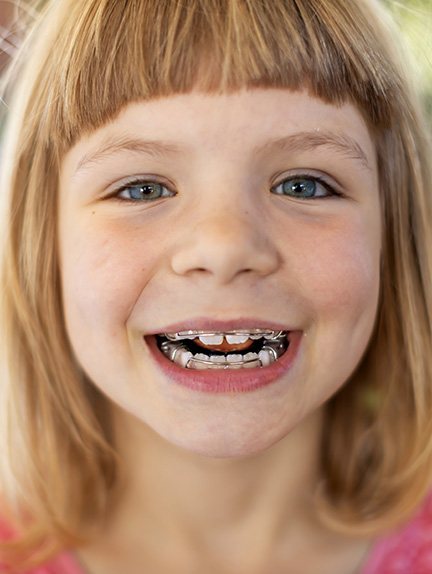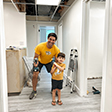Giving Young Smiles a Chance For the Future
Why Choose Oceanside Orthodontics for Traditional Braces?
SATURDAY APPOINTMENTS AVAILABLE

How Does Phase I Orthodontic Treatment Work?
It is recommended that children who are at least 7 years of age see an orthodontist. This visit allows Dr. Quintanal to evaluate the status of their teeth and bite and determine if early intervention is necessary.
If so, it may involve having the child wear a removable orthodontic appliance (either during the day or just to bed) to guide their oral development. It might include a palate expander that helps to widen the jaw and reduce overcrowding or placing some form of braces to encourage erupting and existing adult teeth to move into place accordingly.
Dr. Quintanal will evaluate them at check-in appointments to keep up with their progress and determine when treatment needs to be adjusted or is complete.
Who is a Good Candidate for Phase 1 Orthodontics?
Although not essential for every patient, you can expect that your child will be recommended Phase I Pediatric Orthodontic Treatment if they show signs of:
- A speech impediment
- Have previously and/or continue to practice thumb/finger-sucking
- Overcrowded teeth
- Loud breathing while asleep
- Protruding teeth (both primary and adult)
- Early primary tooth loss
Should your child be a candidate for treatment, we will formulate a plan that addresses the particular problem and serves to encourage proper development of any oral structures.


The Benefits of Phase 1 Orthodontics
- Prevents early-age orthodontic issues from becoming worse
- Allows a child to eat, speak, and smile more comfortably
- Enables adult teeth to come in straight
- Shortens overall orthodontic treatment time
- Helps a child feel more confident in their smile
- Encourages nasal breathing
- Makes it easier to breathe during sleep
- Can correct or prevent mouth breathing/snoring
What Happens During Phase II Orthodontics?
Not all children need to move on to Phase II; however, it is not uncommon. Once Phase I is complete, your child’s smile will need time to “rest” so that any permanent teeth can erupt properly. After they are settled in place, Phase II can begin so that these adult teeth can be straightened and more accurately aligned.
For many children who completed Phase I, they likely will not have to wear braces as long as those who did not receive preliminary treatment.








